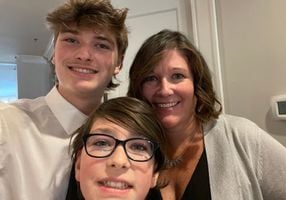As an organizer, I frequently work with those who suffer from Inattentive ADD. That is the reason I have chosen this topic for discussion. I want people to know there should be no fear, shame or embarrassment in this diagnosis and there is help!
In this article I will highlight the second type of ADD called Inattentive. If your child or even an adult in your life is diagnosed by a medical professional with Inattentive ADD a doctor may prescribe medication to help increase focus and ability to concentrate. It may also be of benefit to combine medication with therapy for those who are struggling to manage their ADD. Parents of children who have this type of ADD may themselves benefit from behavioral therapy to learn tactics to help their children with management of ADD.
Individuals with this type of ADD are noted for having difficulty getting organized. A child with Inattentive ADD may have a messy book bag or a cluttered bedroom while an adult may struggle to manage paper work at home or keep their bedroom closet in order. Often, it takes a whole team of support to help a person suffering to break old habits and form new ways to cope with their level of distraction from ADD. Parents, family members, spouses and teachers must all be available to help support the individual with ADD and provide a consistent team approach.
Here are some pointers from an organizing perspective. It is important to know that those with ADD can get organized and stay on track! It takes diligence, effort, and a willingness to follow some guidelines.
Get into a routine - This may be one of the most important parts to creating organization and then remaining consistent with it. A sense of order helps an inattentive individual to remain focused. Follow the same routine each day. The daily schedule should be posted in a central location in the home or office.
Location - Make sure items needed for a daily routine are located in an area where they belong and are easily accessed. For example, toiletries such as tooth brush, tooth paste, hair brushes or other items needed for a morning grooming routine are located in the bathroom under the sink if a child must access them. Items should be put back where they belong after they have been used. Placing an item back in its place truly is a stress reliever because it cuts down on the time and frustration of looking for it!
Make to do lists - To do lists should not be huge running lists of all the projects and errands you ever needed to accomplish in your life! To do lists should be used as a daily tool to help manage your responsibilities within a given day. Keep the list short - 3 to 5 items. Accomplish those items and check them off your list before adding additional tasks. Long lists can be overwhelming therefore creating stress which can lead to a “dear in the headlights response” and then you guessed it…nothing gets accomplished!
Break projects down - Make projects less daunting by decreasing the size. Instead of saying “I will clean the garage today” say, “I will get rid of all the old kids toys today and then I will work on organizing the garden tools." Taking a project piece by piece can often times be less overwhelming. However, stick to a plan when breaking a task down so all the parts of the project do not get overlooked. Otherwise, the task may not get accomplished in its entirety.
Provide clear instructions - Directions for any task should be concise and simple to follow.
I hope you have found these pointers helpful! More to come…and in the mean time, please don’t hesitate to contact me for more help with tackling those areas of disorganization in your home or your brain!
Kirsten Gross Professional Organizing LLC
kgprofessionalorganizer@gmail.com
Find Part 1 of this series here!
Find Part 1 of this series here!


